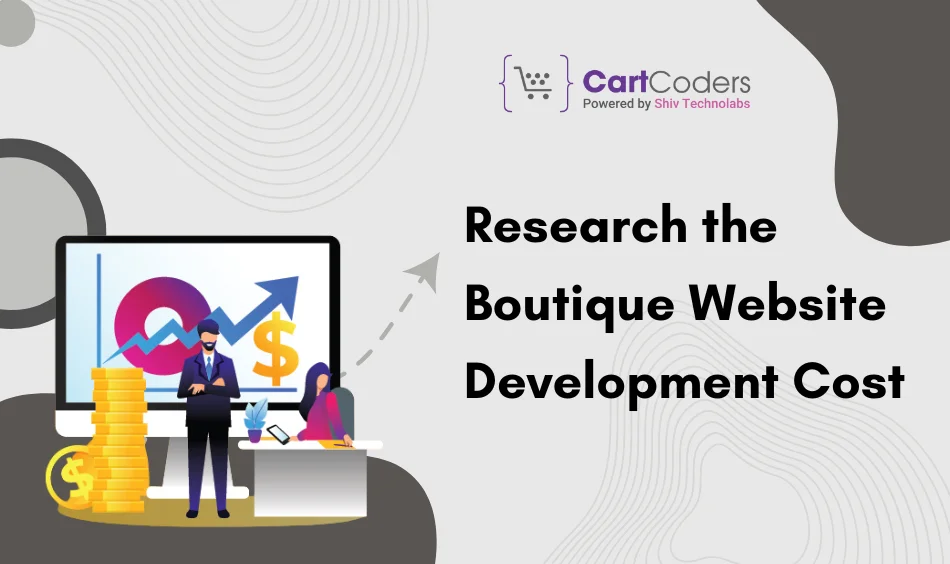Custom Engagement Solutions
Unlock tailored solutions with a free, no-obligation strategy session.
Expert Developers & Engineers on Demand
Scale Your Team with Skilled IT Professionals
Expert Guidance for Digital Transformation
![How to Start a Boutique Store & Website in 2025 [10 Steps]](https://cartcoders.com/blog/wp-content/uploads/2025/02/How-to-Start-a-Boutique-Store-Website-in-2025-10-Steps-950x500.webp)
In 2025, opening a boutique offers a compelling blend of traditional retail creativity and the dynamic, digitally integrated world of contemporary fashion. Strategic thinking is most important for success if you’re opening a physical boutique, an e-commerce shop, or a blended model.
The following article covers ten critical steps to launch your boutique shop and website successfully this year.

Get your niche and target market in mind before even considering store design or website aesthetics. What will you be selling? Women’s clothing, accessories, a particular style like vintage or boho? A thorough understanding of this ensures accurate customization of your boutique’s brand and merchandise for your ideal customer.
A boutique’s target audience dictates its marketing and branding. Casual youth clothing requires a different approach than luxury senior apparel. In a crowded market, this focus is your differentiator.
Next, choose your business model. Will you be entirely online, or will you also have a physical store? Some boutique owners prefer to begin online and subsequently open a store after establishing a strong client base.

After finalizing your business model, prioritize your online presence. Connect with your customers effectively with a standout boutique website. Your choice: a custom website for full customization, or a platform like Shopify or WooCommerce for affordability. This decision will directly dictate your boutique website development costs and what your website can do. Following is the list of the costs for starting a boutique website on Shopify and WooCommerce in 2025:
| Cost Aspect | Shopify | WooCommerce |
| Monthly Subscription | $39 – $399 (depending on plan) | Hosting: $10 – $30/month |
| Domain Name | Included in Subscription | $10 – $20/year |
| SSL Certificate | Included in some plans | $50 – $150/year |
| Theme Costs | Free or $140 – $180 (premium) | Free or $30 – $100 (premium) |
| Apps/Plugins | $5 – $50/month (depending on features) | $10 – $50/month (for premium plugins) |
| Website Development (Custom) | $1,000 – $5,000 | $1,000 – $7,000 |
| Ongoing Costs | $100 – $500/month (subscription, apps) | $50 – $200/month (hosting, plugins) |
| Total Initial Setup Costs | $1,200 – $2,500 | $1,500 – $4,000 |
Choosing between Shopify and WooCommerce is a key decision for your boutique’s online store.
Make sure your domain name is simple and reflects your brand, for example using ‘bohochicboutique.com’. If you choose Shopify, hosting is already taken care of. If you choose WooCommerce, you will need to pick a hosting provider, and Bluehost or SiteGround are good choices.
To convert website traffic into customers, spend money on good design. Your boutique website must be simple to use, easy to navigate, and nice to look at. Get a designer or purchase a boutique website design package.
Select a design that presents your products well, with good descriptions, and simple navigation. Have good images, a minimal shopping cart, and a simple checkout for a successful boutique website.
If you’re using Shopify or WooCommerce, both have pre-made themes that you can use and modify. Ensure your website is excellent on mobile phones; lots of folks shop on those.
A strong foundation for your boutique lies in securing reliable product sources. Cultivate strong relationships with suppliers of high-quality, brand-aligned products. These relationships, whether for custom designs or wholesale, ensure competitive pricing and consistent product quality.
Carefully evaluate shipping timelines, costs, and minimum order requirements. Consider partnering with local artists and designers to offer unique, boutique-exclusive items.
Strategic pricing is a top priority for the profitability of your boutique. Consider your product’s cost, your desired profit margins, and current market prices. A detailed pricing strategy includes shipping charges, marketing expenses, and any overhead costs applicable.
An extensive boutique store setup cost analysis is crucial. It will allow you to develop a realistic budget for website development, product procurement, inventory management, and marketing activities. Carefully monitor all expenses to ensure budgetary control and make necessary adjustments.
Marketing is how you bring people to your boutique website and purchase items. In 2025, you’ll continue to need digital marketing: social media, influencers, email, and SEO.
Think about your marketing budget. Include the cost of boutique marketing services if you’re hiring marketing professionals. To get to your dream customers, use targeted ads on Google, Facebook, and Instagram to get to your idea.
Make interesting posts, host contests, and engage with your social media followers. This will establish your brand online, generate loyal customers, and generate website traffic.
You’ll have to deal with legal and registration matters before opening your boutique. Here’s what to consider:
While everything is in place, now is the time to open your online boutique. Collaborate with a development team such as CartCoders to ensure an entirely optimized site. Conduct extensive testing on every functionality such as the shopping cart, payment processing, and checkout to confirm that the whole customer experience will be smooth and efficient from the very beginning.
Maximize your launch by announcing on social media, email, newsletters, and influencer collaborations. Launch-day promotions and sales will generate buzz and encourage first-time customer traffic. Our technical proficiency will make your boutique’s online presence shine professionally, laying the groundwork for a successful launch.
Projects delivered in 15+ industries.
95% retention rate, building lasting partnerships.
Serving clients across 25+ countries.
60+ pros | 10+ years of experience.